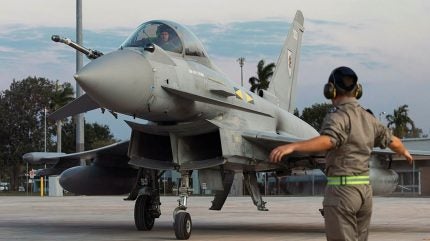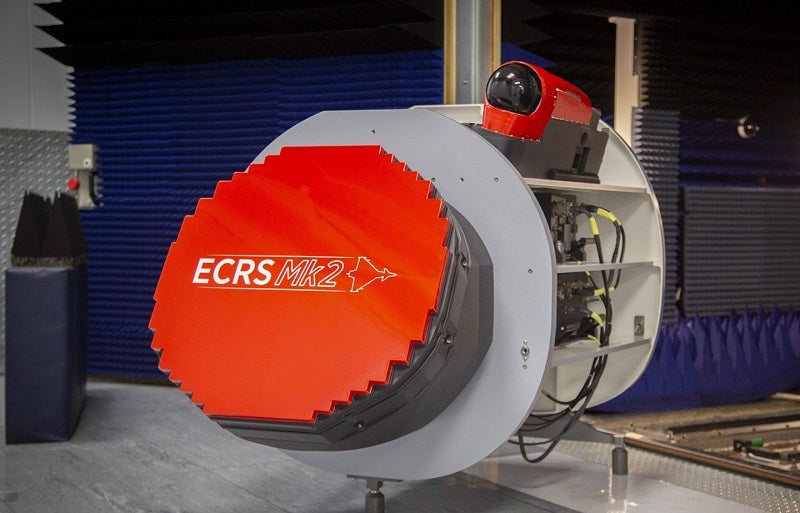
The UK Royal Air Force (RAF) demonstrated the European Common Radar System Mark 2 (ECRS Mk2) on a Typhoon test and evaluation aircraft according to a government update on 27 September 2024.
ECRS Mk2 was validated at BAE Systems’ flight test facility in Lancashire, supported by the radar’s developer, Leonardo UK.
This is the latest radar iteration developed alongside the UK Ministry of Defence. Specifically, it incorporates Electronic Warfare (EW) and attack functions that increase threat awareness to allow pilots to suppress enemy air defences on the ground.
Using the Active Electronically Scanned Array (AESA) system, the radar enables operators to locate, identify and jam enemy radio frequency emitted from surface-to-air systems.
Leonardo initially delivered the prototype Mk2 radar in April 2023. The system was built in Edinburgh, the home of UK combat radar, and Luton, where the company conducts advanced EW research.
The unique aspect of Mk2, compared to previous ECRS versions, is that the system is able to track both airborne and ground-based emitters without having to discharge a signal itself.
How well do you really know your competitors?
Access the most comprehensive Company Profiles on the market, powered by GlobalData. Save hours of research. Gain competitive edge.

Thank you!
Your download email will arrive shortly
Not ready to buy yet? Download a free sample
We are confident about the unique quality of our Company Profiles. However, we want you to make the most beneficial decision for your business, so we offer a free sample that you can download by submitting the below form
By GlobalDataThis capability is a wide-band array, meaning it can detect its own active transmit-receive functions to detect targets, and it can also passively detect emissions through a far broader range of the spectrum.

The platform and its evolution
The aircraft was originally designed to perform an air-to-air combat role, though since then, operators have developed the platform into a multi-role fighter. The ECRS Mk2 is a key part of this transition.
Typhoon is constructed of carbon-fibre composites, glass-reinforced plastic, aluminium lithium, titanium and aluminium casting. Stealth technology features include low frontal radar cross-section, passive sensors and supercruise ability.
The foreplane/delta configuration is intentionally aerodynamically unstable which provides a high level of agility (particularly at supersonic speeds), low drag and enhanced lift.
Meanwhile, the pilot controls the aircraft through a computerised digital fly-by-wire system which provides artificial stabilisation and gust elevation to give good control characteristics throughout the flight envelope.
ECRS Mk2 will be compatible with Typhoon tranches two and three in the RAF – comprising 107 fighters out of 137 units, split between 67 and 40 aircraft respectively, according to a UK Defence Committee report published last year.
Notably, tranche one, consisting of 30 units, is scheduled to retire by 2025 as they face obsolescence challenges. Although, the Defence Committee determined that the RAF ought to “mothball” these earlier units due to the lack of any operational reserve until 2035, when the sixth-generation Tempest fighters are due to enter service.



